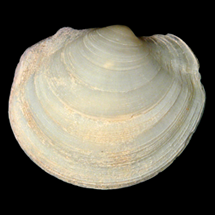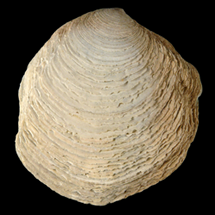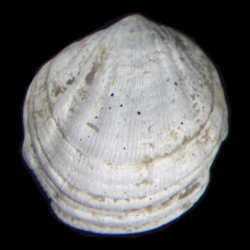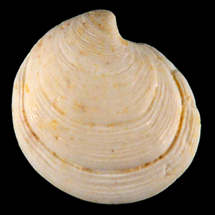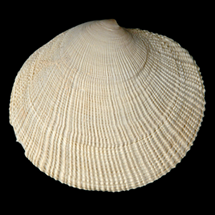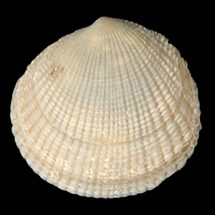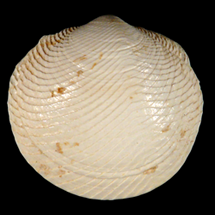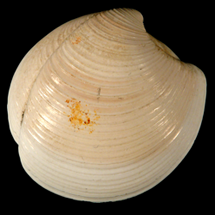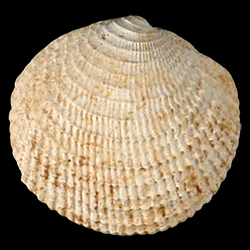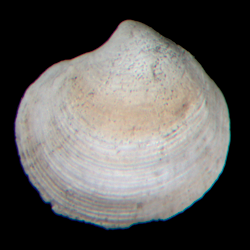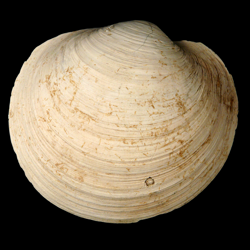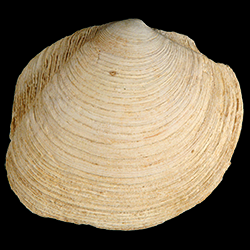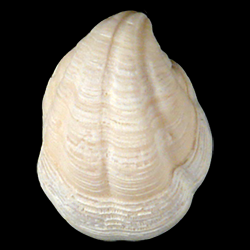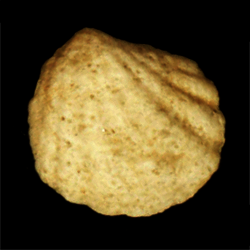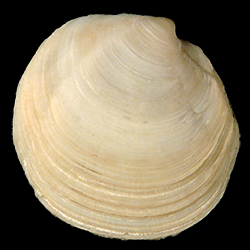
Lucinidae

- Phylum: Mollusca
- Class: Bivalvia
- Order: Imparidentia
- Family: Lucinidae
Overview
Common name: Lucine clams
Key morphological features: The Lucinidae range in size up to ~150mm. The shells are equivalve, compressed or inflated, and range in outline shape from circular to trapezoidal. The shell is composed of aragonite and exterior sculpture is either absent or consists of commarginal ridges crossed by radial ribs. A radial depression called a sulcus is present in many species, most often on the posterior side of the shell, but occasionally also on the anterior side. Valve interiors have a simple, uninterrupted pallial line and the pallial area can have a coarse texture. The interior shell margins can be either smooth or have weak denticulation, depending on the species. Species of Lucinidae are heteromyarian, with the posterior adductor muscle scar having an oval outline and the anterior adductor muscle scar similar in width, but substantially dorsoventrally elongated. The heterodont hinge has two cardinal teeth and anterior and posterior lateral teeth may be present or absent depending on the species. Source: Mikkelsen, P.M., and Bieler, R. 2008. Seashells of Southern Florida: Bivalves. Princeton, New Jersey: Princeton University Press. 503 pp.
Geological range: Silurian to Recent (Mikkelsen & Bieler, 2008).
Geographic distribution: A distributional map for modern Lucinidae may be accessed from OBIS. A distributional map for ancient Lucinidae may be accessed from the Paleobiology Database.
Diversity: There are 388 recognized living species of Lucinidae and 95 genera (WoRMS database, unvetted). The Paleobiology Database recognizes 106 fossil genera and 437 fossil species of Lucinidae (unvetted).
Paleoecology: The Lucinidae are mobile, marine, filter-feeding bivalves. They live infaunally, deeply buried in soft sediments that are often reduced and contain high concentrations of sulfide. Lucinids harbor chemosymbiotic sulfide-oxidizing bacteria in their gill tissues that allow them to thrive in environments such as anoxic muds and deep cold seeps. Lucinids can be found worldwide and inhabit a range of environments from estuaries to the deep sea. Source: Mikkelsen and Bieler (2008).
Phylogenetic status: Monophyletic. The molecular phylogenetic analysis by Williams et al. (2004) supports the monophyly of Family Lucinidae.
